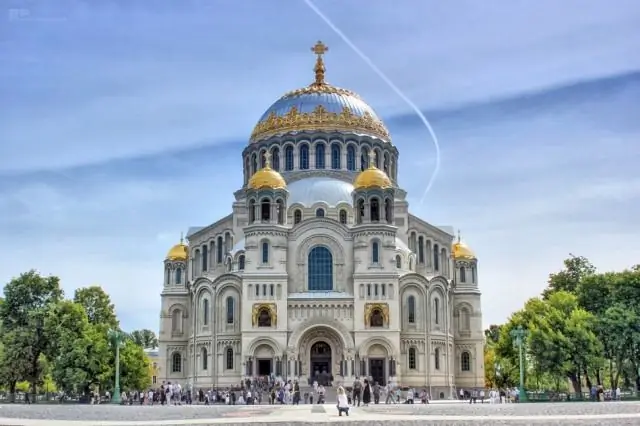Kronstadt is no longer a closed city, which earlier could only be entered by the lucky ones who had family ties with the inhabitants of Kotlin Island. Since 1996, you can freely visit Kronstadt on the road connecting it with St. Petersburg or on one of the ferries departing again from the city on the Neva.

Kronstadt - history of origin
Kronstadt owes its appearance to St. Petersburg. A year after the founding of the northern capital (in May 1704), by order of Peter I, the city was founded, guaranteeing protection from the sea. Fort Kronslot appeared first. The fortress located in it was given a beautiful name - Venets-gorod or Kronstadt. The history of Kronstadt is closely related to the Russian fleet. After the forts, harbors began to appear, which protected the bastions. Later, all this turned into a base for the Baltic Fleet. The first buildings were simple - land and logs were used for their construction. Later they began to use stone. In total, 21 forts were erected, each of which was named either by geography or in honor of military leaders and kings. Despite the fact that the forts are abandoned, their popularity continues unabated. Those who are interested in the dungeons, and those who want to capture these places in photographs, gather here, since the atmosphere in the forts is indescribable and inspiring for creativity. The fans of the author's song, who annually organize festivals in Kronstadt, did not remain indifferent.
What to see in Kronstadt in 1 day
Walking around the city can traditionally start from the historical part. The Gostiny Dvor complex, the Obvodny Canal, encircling the majestic Admiralty building - everything is located almost side by side. A shady alley stretches along the canal, where you can see the monument to Thaddeus Bellingshausen. This admiral is a graduate of the Naval Cadet Corps. During the Russian circumnavigation, led by Ivan Kruzenshtern, Bellingshausen led the sloop Vostok, which together with the Nadezhda reached Antarctica in January 1820. It was then that this icy continent was discovered. Continuing your tour of Kronstadt, you can find yourself at the Naval Cathedral. This majestic building, 70 meters high, is considered the tallest in the city. In its forms, it is similar to Istanbul's Hagia Sophia. The construction of the cathedral took 10 years, it lasted from 1903 to 1913. After the revolution, the Naval Cathedral did not escape the fate of other churches, turning into a cinema, and later a concert hall and club. But everything is returning to normal: today the cathedral has been restored and is again ready to receive believers under its majestic vaults.
The square on which the temple is located is interesting. Her name is Anchor and it is made in the shape of a triangle. On the square you can see a monument to another outstanding admiral. The Makarov Monument is cast in bronze and rises 4 meters. The pedestal is granite, and the bas-reliefs decorating it tell about significant events in the life of the naval commander.
Not only the monument reminds of the great deeds of Makarov. A beautiful openwork bridge bears his name. It was ordered to be installed before the arrival of Nicholas II, who was supposed to be present at the opening ceremony of the monument to the admiral. It was expected that the emperor would want to take a walk from the pier to Anchor Square. The walking tour would have to be postponed due to the deep ditch, but the organizers of the celebration solved the problem with the help of a bridge built at a marine plant. Since the flooring was wooden, it was forbidden to walk in formation on it, so as not to provoke a resonance. Now the wooden flooring has been replaced by asphalt, but in general the construction of the Makarovsky Bridge remains the same as a century ago.
Sights of Kronstadt: walks through the gardens, parks and inspection of the Italian Palace
Not far from the bridge is the Summer Garden, and if you go to the harbor, you can get to Petrovsky Park. It is imperative to walk along them in order to enjoy the beauty of nature. After the peaceful atmosphere of the gardens and parks, you can return to sightseeing in the city by taking a walk to the monument to Alexander Popov, thanks to which the radio appeared. It is located in a public garden on the territory of the naval school, in which Popov once taught.
From the Popov Museum, many go to the Italian Palace. It was built for Menshikov at the beginning of the 18th century by the project of Johann Bronstein, an architect from Italy. Later, the palace housed a navigational school within its walls, and even later - the Naval Cadet Corps.
Next to the Italian Palace is the Italian Pond, around which cannons are installed on carriages made of wood. This is a kind of open-air exhibition demonstrating the tools of Peter's times. The cannons are directed towards Dutch cuisine, where coca used to prepare food. Cooking on ships was strictly prohibited in order not to provoke fires.






